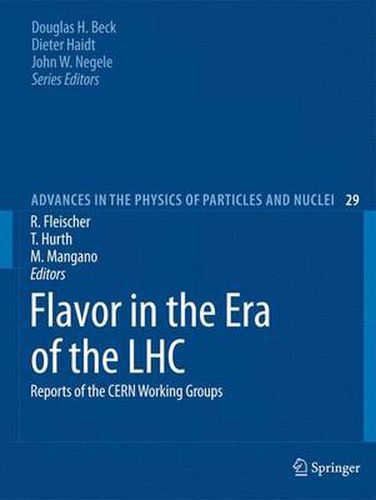Readings Newsletter
Become a Readings Member to make your shopping experience even easier.
Sign in or sign up for free!
You’re not far away from qualifying for FREE standard shipping within Australia
You’ve qualified for FREE standard shipping within Australia
The cart is loading…






This title is printed to order. This book may have been self-published. If so, we cannot guarantee the quality of the content. In the main most books will have gone through the editing process however some may not. We therefore suggest that you be aware of this before ordering this book. If in doubt check either the author or publisher’s details as we are unable to accept any returns unless they are faulty. Please contact us if you have any questions.
a R. Fleischer, T. Hurth, M. L. Mangano Physics Department, CERN, 1211 Geneva, Switzerland In the history of quantum and particle physics, discrete system. In this past decade, the key player has been the B-meson system, and we also witnessed the appearance on symmetries and their violation have played an outstanding + ? role. First, the assumption of the conservation of P (parity), stage of the top quark. Thanks to thee e B factories with C (charge conjugation), CP and CPT (T denotes time rever- their detectors BaBar (SLAC) and Belle (KEK), CP vio- tion is now also rmly seen in B-meson decays, where the sal) helped theorists to restrict theoretical predictions, such 0 golden decay B ?J/?K shows CP-violating effects as in Fermi’s 1934 seminal paper on weak interactions. In S d at the level of 70%. These effects can be translated into the 1957, the observation of P (and C) violation in weak int- angle? of the unitarity triangle (UT), which characterizes actions gave a new impact and led to the conjecture that CP the Kobayashi-Maskawa mechanism of CP violation. S- was still a conserved symmetry. In 1963, one year before + ? eral strategies to determine the other angles of the triangle, the surprising observation of CP violation in K ?? ? L ? and ?, have been proposed and successfully applied to decays, the concept of quark- avour mixing was introduced theB-factory data.
$9.00 standard shipping within Australia
FREE standard shipping within Australia for orders over $100.00
Express & International shipping calculated at checkout
This title is printed to order. This book may have been self-published. If so, we cannot guarantee the quality of the content. In the main most books will have gone through the editing process however some may not. We therefore suggest that you be aware of this before ordering this book. If in doubt check either the author or publisher’s details as we are unable to accept any returns unless they are faulty. Please contact us if you have any questions.
a R. Fleischer, T. Hurth, M. L. Mangano Physics Department, CERN, 1211 Geneva, Switzerland In the history of quantum and particle physics, discrete system. In this past decade, the key player has been the B-meson system, and we also witnessed the appearance on symmetries and their violation have played an outstanding + ? role. First, the assumption of the conservation of P (parity), stage of the top quark. Thanks to thee e B factories with C (charge conjugation), CP and CPT (T denotes time rever- their detectors BaBar (SLAC) and Belle (KEK), CP vio- tion is now also rmly seen in B-meson decays, where the sal) helped theorists to restrict theoretical predictions, such 0 golden decay B ?J/?K shows CP-violating effects as in Fermi’s 1934 seminal paper on weak interactions. In S d at the level of 70%. These effects can be translated into the 1957, the observation of P (and C) violation in weak int- angle? of the unitarity triangle (UT), which characterizes actions gave a new impact and led to the conjecture that CP the Kobayashi-Maskawa mechanism of CP violation. S- was still a conserved symmetry. In 1963, one year before + ? eral strategies to determine the other angles of the triangle, the surprising observation of CP violation in K ?? ? L ? and ?, have been proposed and successfully applied to decays, the concept of quark- avour mixing was introduced theB-factory data.